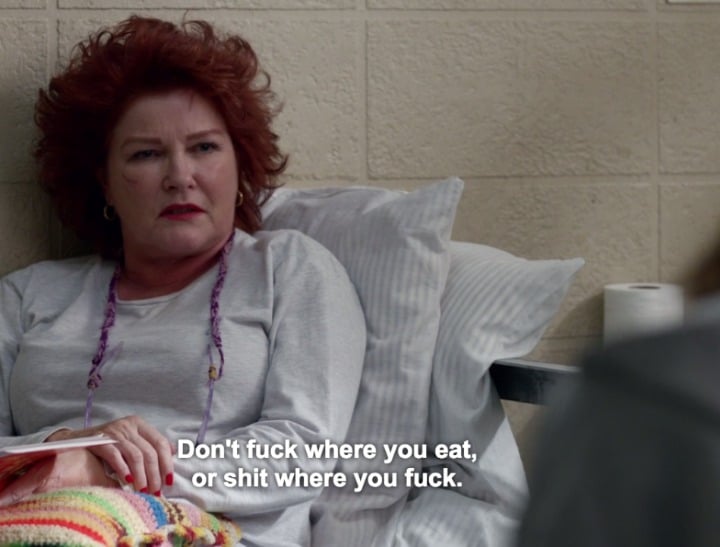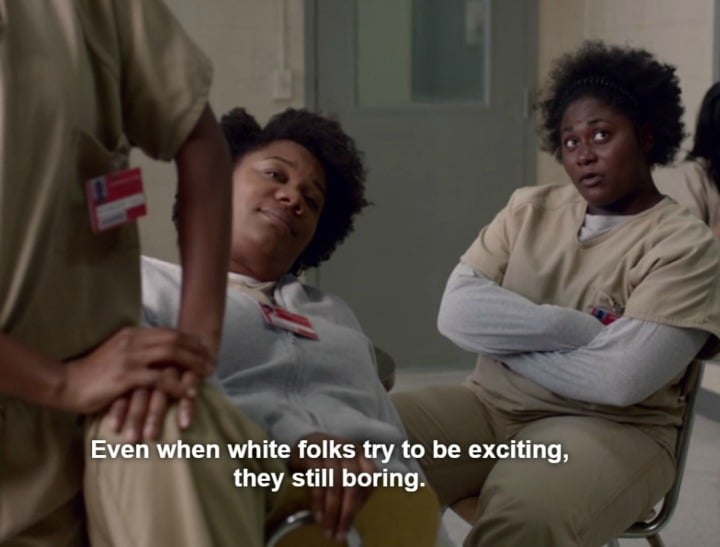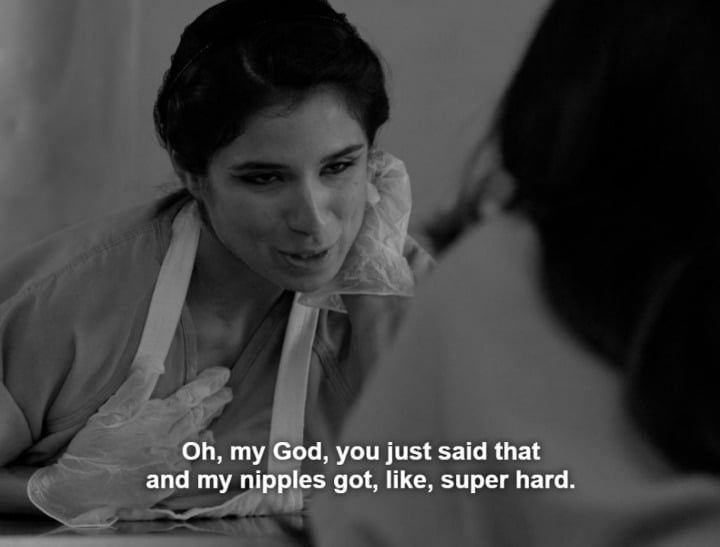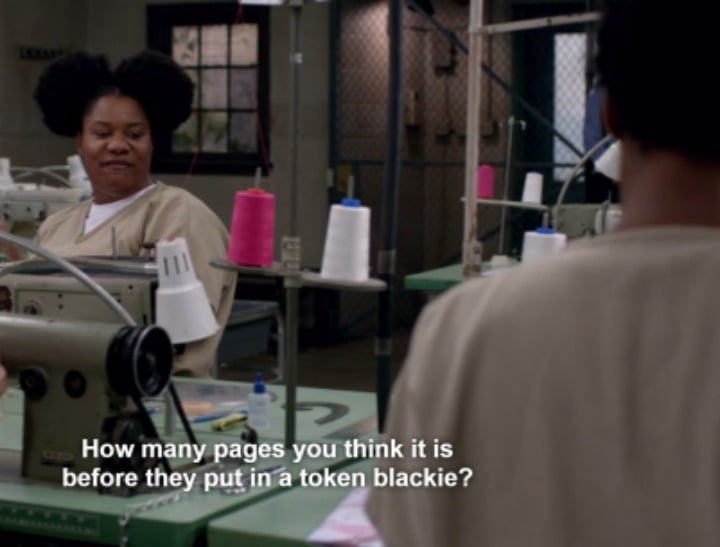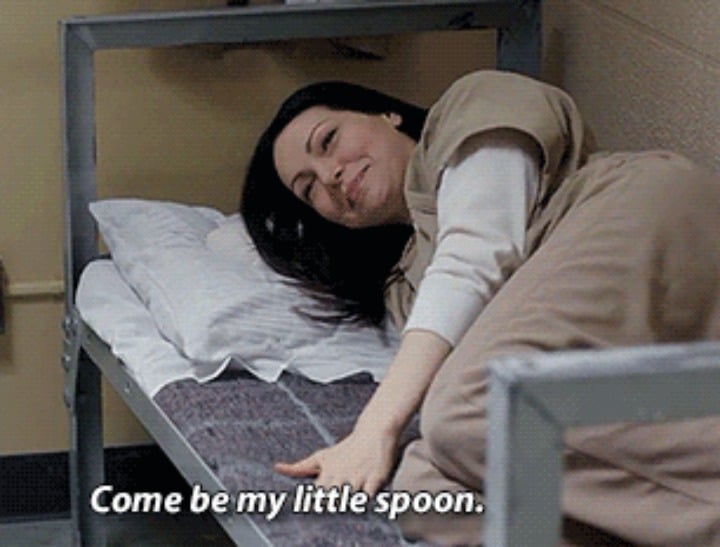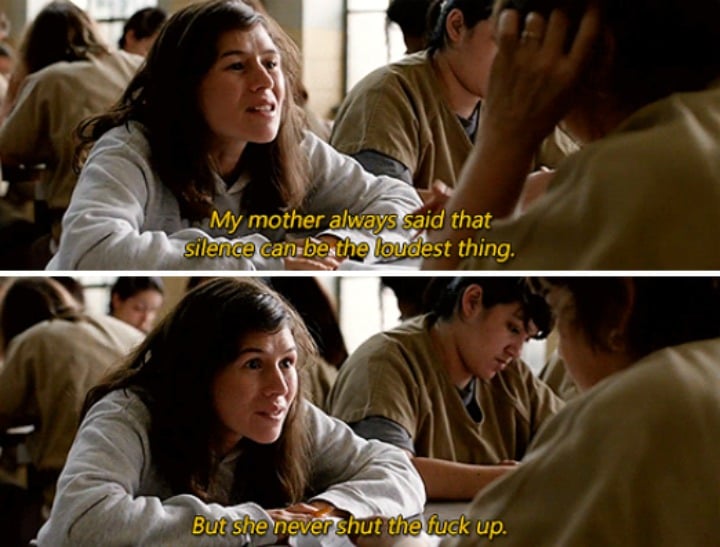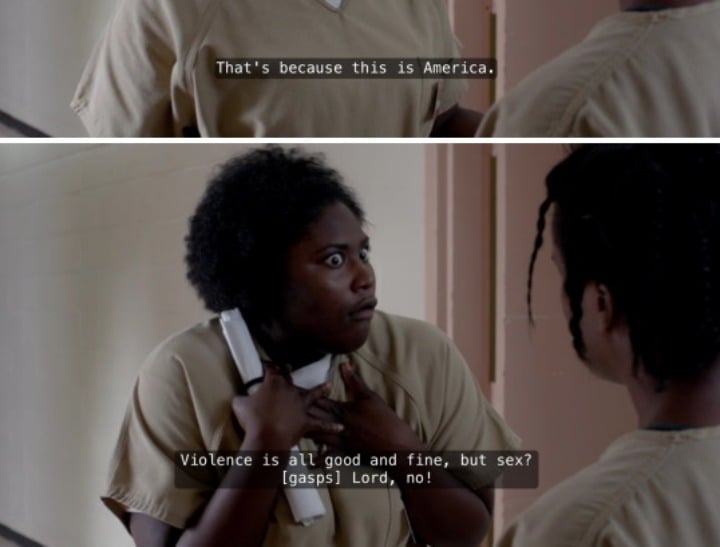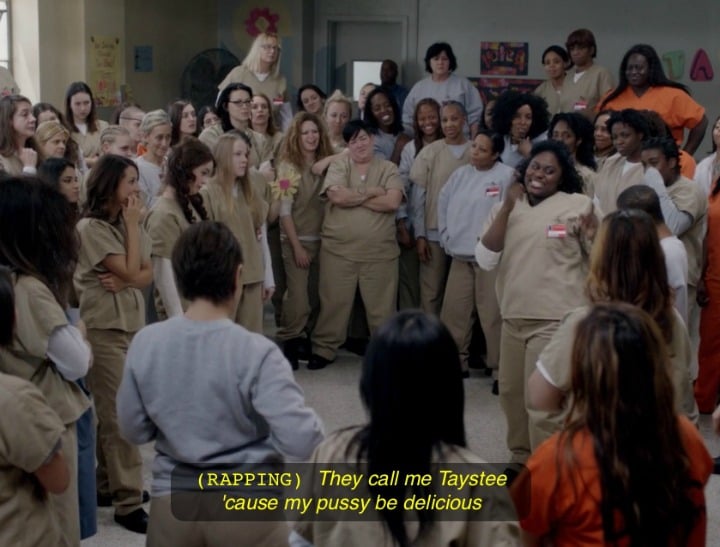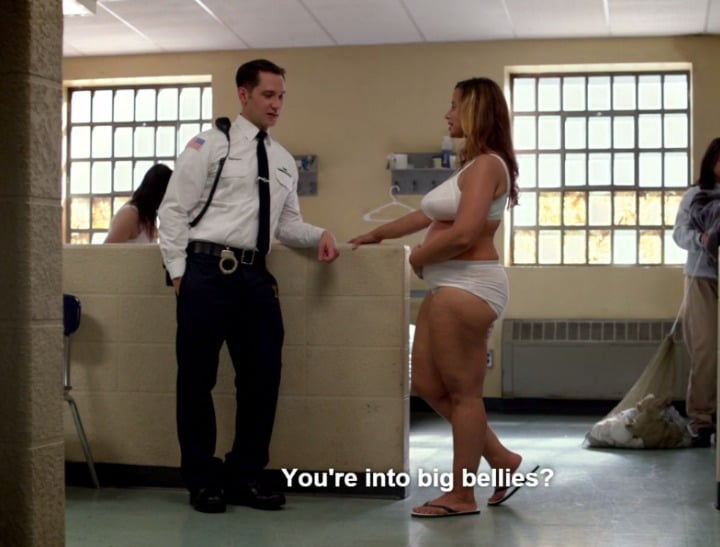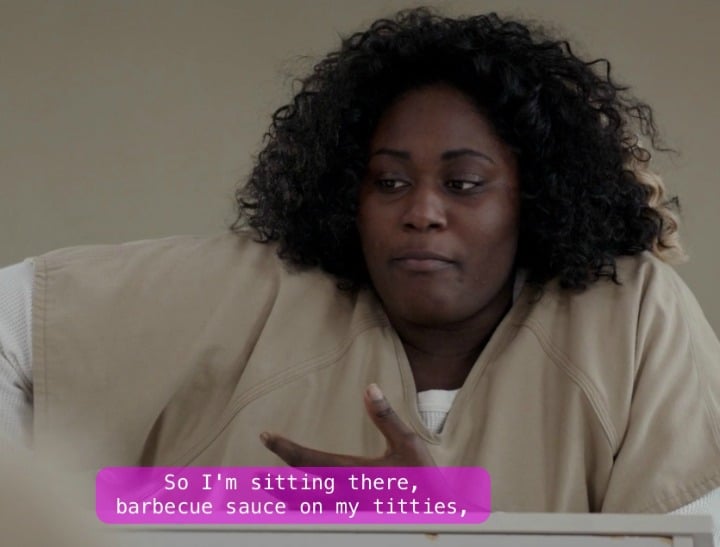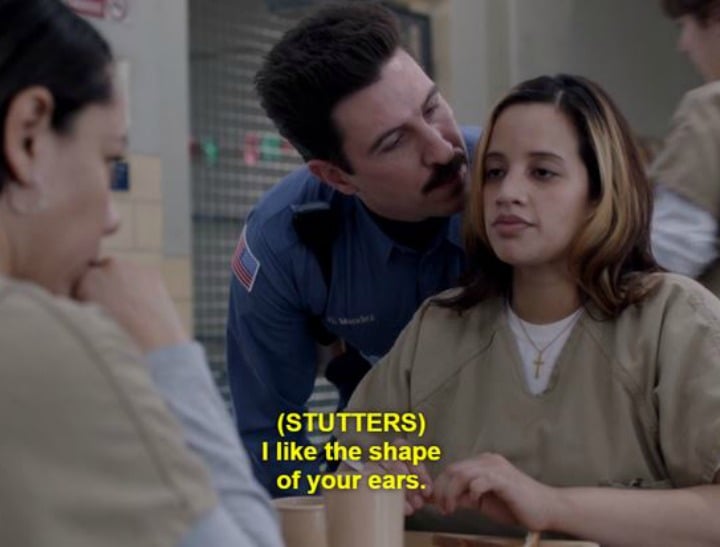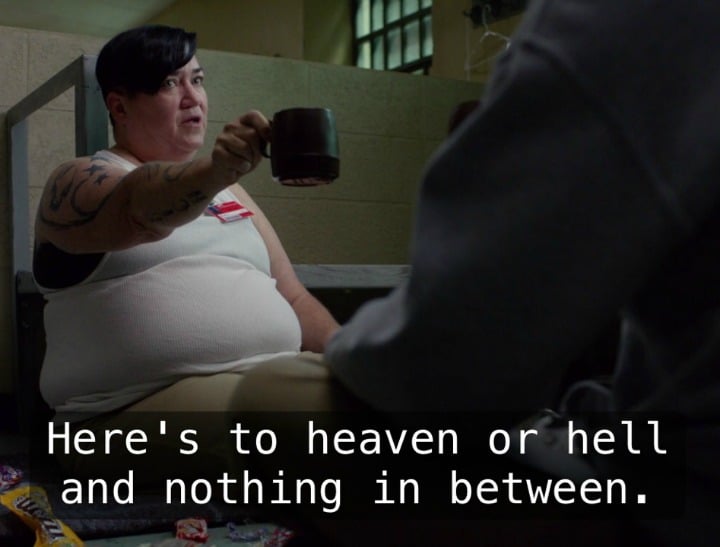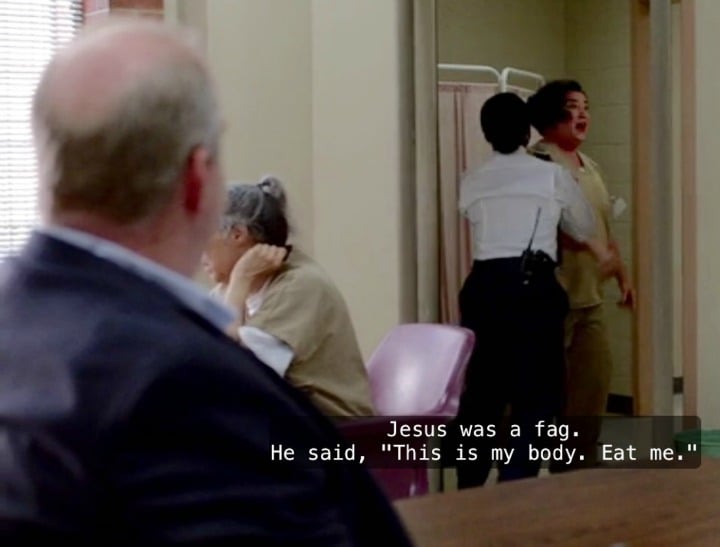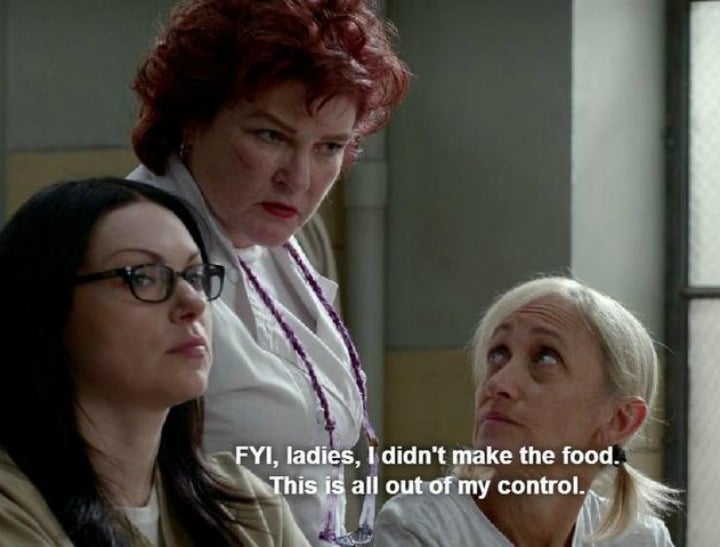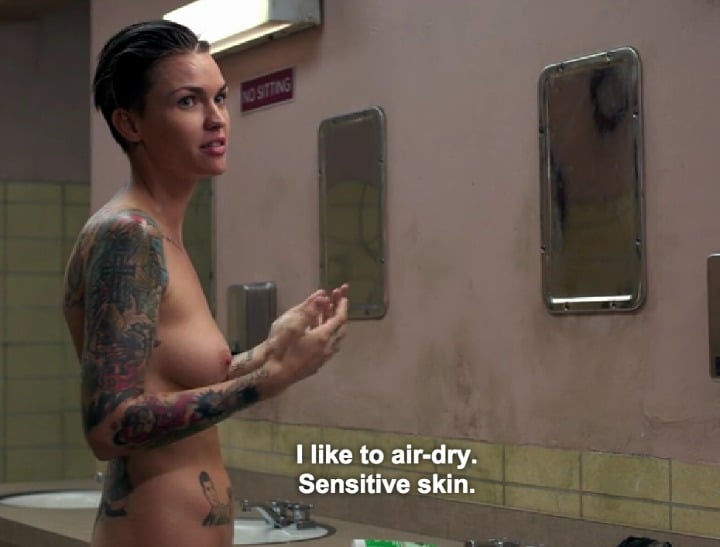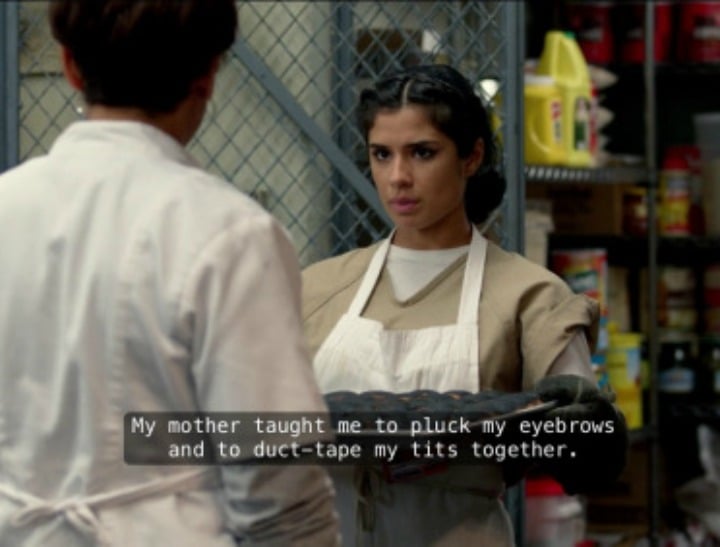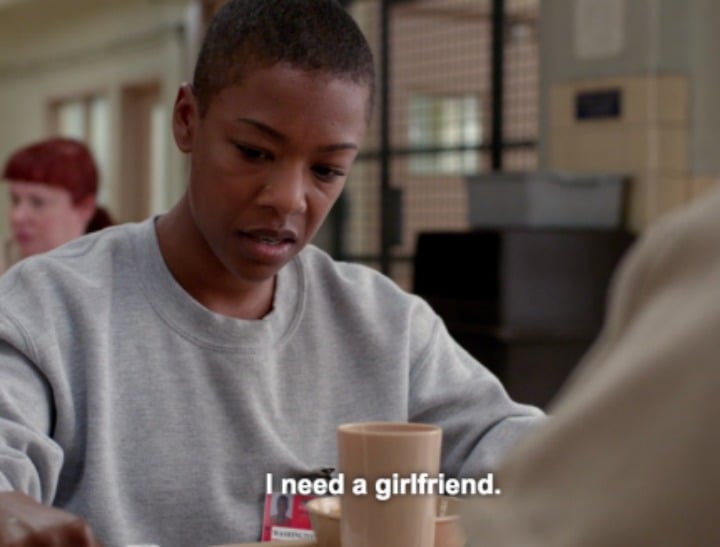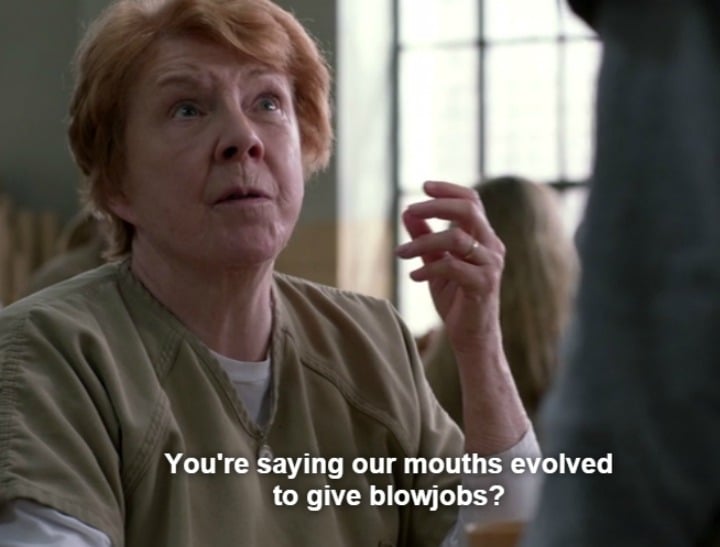
Not only is “Orange Is The New Black” a great TV show, it has also debunked at least five myths about bisexuality.
When it was announced that Jason Biggs — the actor who plays Orange Is the New Black protagonist Piper’s ex-fiancee — would not return for the show’s third season, fans began to speculate: Will OITNB — and Piper herself — truly acknowledge her bisexuality this season? Piper had an intimate relationship with Alex (which led to her downfall to begin with) and maintains romantic feelings for Alex, who will return to Litchfield Correctional Facility this season.
On a show that is undeniably head and shoulders above others in terms of trans visibility, racial diversity and the portrayal of various sexual orientations, it still only lightly touches upon bisexuality, underscoring just how stigmatised and largely misunderstood the identity still is. Perhaps season three, released last week, will address her sexual identity head-on. Regardless, the show has put sexual fluidity in a powerful spotlight, even if it has hardly dared to use the term “bisexual.” Here are a few widespread myths about bisexuality the show has quietly debunked.
1. Myth: There is a single bisexual identity.
The most common definition of bisexuality is sexual attraction to both men and women, but this can occur to “varying degrees and in different ways,” according to Debby Herbenick, associate professor at Indiana University and author of The Coregasm Workout. Some bisexual-identified people, she said, are sexually attracted to both women and men but romantically attracted to only men or only women, and vice versa.

